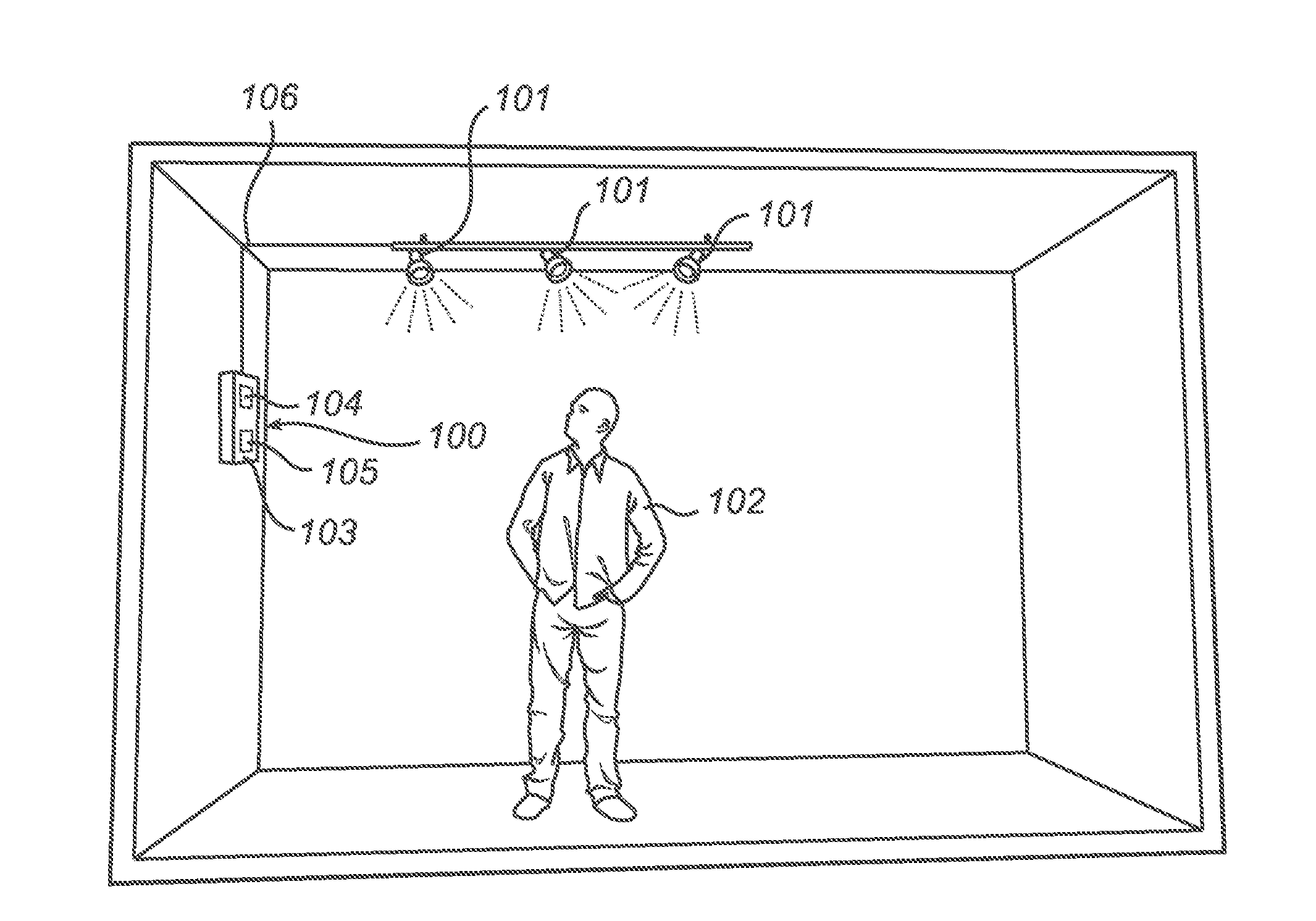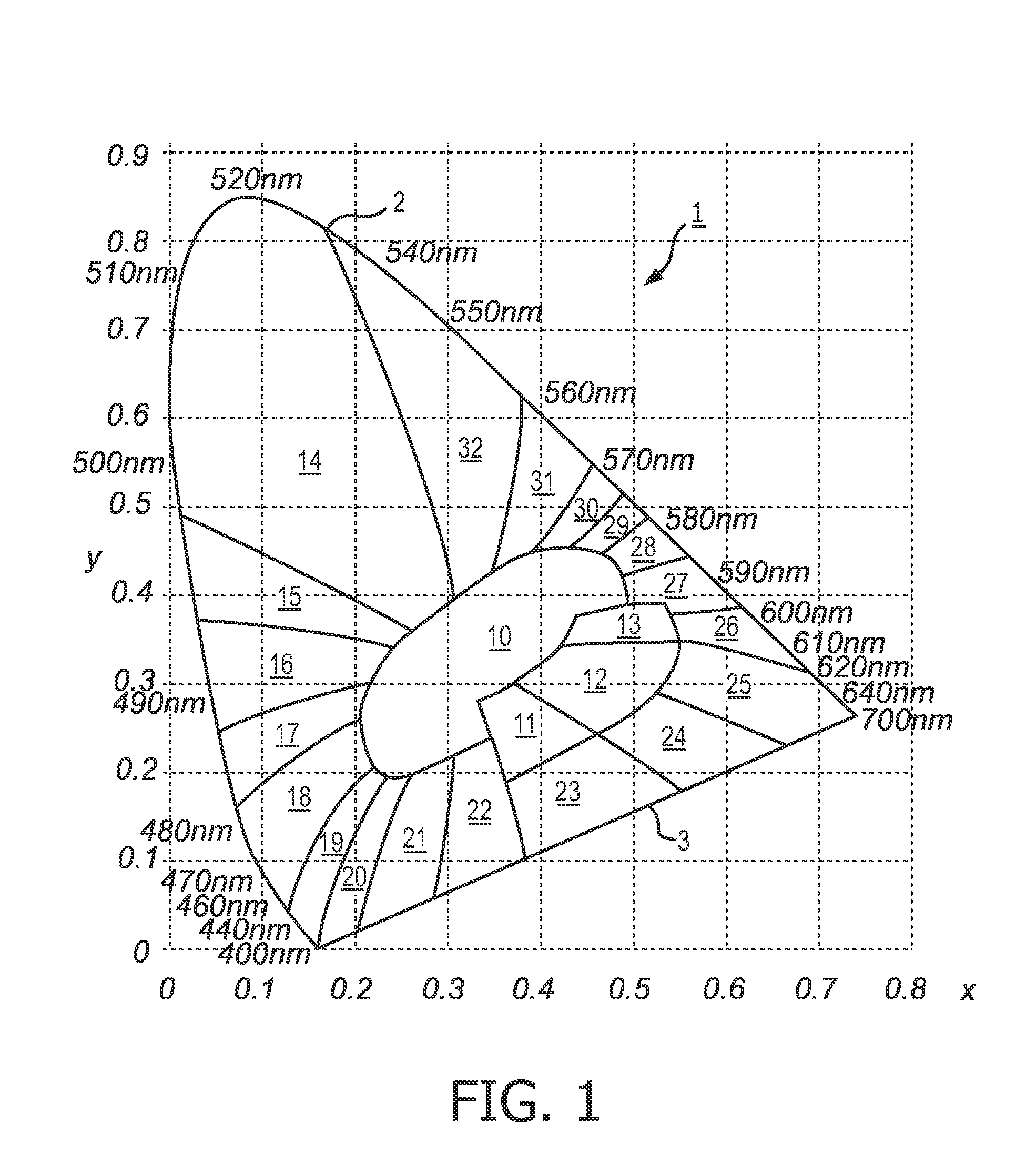Color lighting system to influence perception of ambient temperature
a color lighting and ambient temperature technology, applied in the field of color lighting systems to influence the perception of ambient temperature, to achieve the effect of lowering the energy consumption of climate and/or heating control systems such as air conditioners, lowering the ambient temperature, and lowering the need for air conditioning systems
- Summary
- Abstract
- Description
- Claims
- Application Information
AI Technical Summary
Benefits of technology
Problems solved by technology
Method used
Image
Examples
Embodiment Construction
[0036]FIG. 1 shows the well-known CIE1931 chromaticity diagram. The diagram represents all of the chromaticities visible to an individual. The chromaticities are approximately indicated by way of marked regions shown in the tongue-shaped area 1. The curved edge 2 of the tongue-shaped area 1 corresponds to monochromatic light of wavelengths denoted in nanometers. The straight edge 3 at the lower part of the tongue-shape area 1 has no counterpart in monochromatic light. Less saturated colors appear in the interior of the FIG. 1, with region 10 representing white at the center. Other regions shown in FIG. 1 include region 12 for pink, region 14 for green, region 18 for blue, region 25 for red and region 29 for yellow, as well as a number of further regions for colors in between. In an embodiment of the present invention, color of light is categorized into groups using properties of the CIE1931 chromaticity diagram. Colors giving a feeling of elevated ambient temperatures are colors bet...
PUM
 Login to View More
Login to View More Abstract
Description
Claims
Application Information
 Login to View More
Login to View More - R&D
- Intellectual Property
- Life Sciences
- Materials
- Tech Scout
- Unparalleled Data Quality
- Higher Quality Content
- 60% Fewer Hallucinations
Browse by: Latest US Patents, China's latest patents, Technical Efficacy Thesaurus, Application Domain, Technology Topic, Popular Technical Reports.
© 2025 PatSnap. All rights reserved.Legal|Privacy policy|Modern Slavery Act Transparency Statement|Sitemap|About US| Contact US: help@patsnap.com



